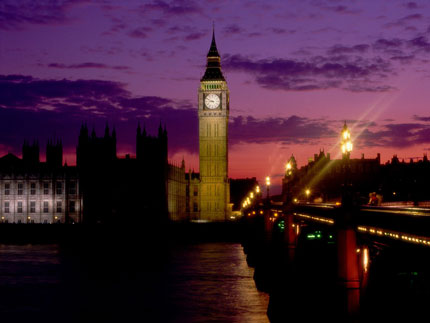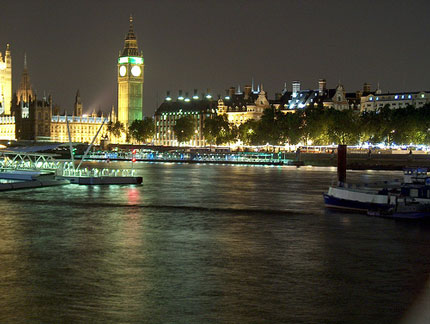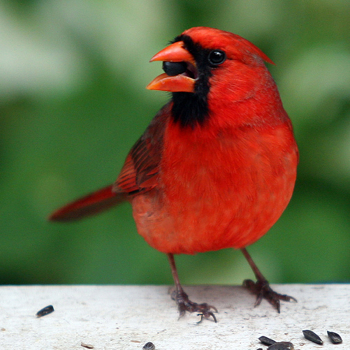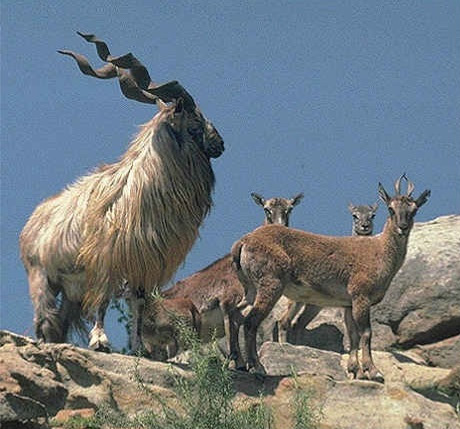Not parasites, lonely nights atop snowy mountains nor the occasional
charging rhino can discourage the world’s best wildlife photographers.
Anna Klauzner finds out why these shooters risk life and limb doing what
they love.
As far as dream jobs go, a career that includes
parasites, living in a tent and the occasional brush with death doesn’t
generally sit high on the average person’s wish list. Yet what can only
be described as an OSH disaster for some is the ideal profession for
others.
commissioned,
life on the road is riddled with unanticipated hurdles and
complications. Still, those photographers who nab the golden ticket
swear that this is the best job on earth.
When D-Photo spoke with
National Geographic wildlife photographer Steve Winter, he had just
returned from an assignment in Thailand. For a man who has the best job
on earth he sounded awfully low. “It’s pretty exciting, that’s for sure,
though not so exciting right now because I have two parasites from my
last trip. It was a pretty tough day but … I love what I do.” It is this
attitude that drives the industry’s top guns; an absolutist can-do
approach and a desire to take on any hurdle, no matter how big and
impossible it seems.
In 2008, Winter became the Wildlife
Photographer of the Year, receiving the industry’s highest accolade for
an image of a snow leopard, which was previously considered
unachievable. Winter spent many months living in a tent in impossibly
cold circumstances to get the shot. “I would go to bed and call my wife
until my hands would freeze and then I would jump into two sleeping
bags. It was very difficult because it was just such extreme cold. It
was too cold to even snow,” says Winter.
But in this extremely
competitive industry, failure is not an option. “Every time you walk out
the door your career is hanging in the balance.”
Taking a photo
of a snow leopard is no easy feat. These cats are notoriously camera
shy. They have great eyesight and hearing, so getting close is virtually
impossible. Winter managed to take a picture of the cat with a 500mm
lens on one of the first days — but that wasn’t his goal. “We don’t need
a record shot of this animal, people already know what they look like.
My goal is to get something that can be a double-page spread in National
Geographic. I need something that is absolutely beautiful.”
Winter used remote camera traps, carefully positioned according to
months of research, to finally secure the image. He had to predict the
time of day, light and exact movement of the snow leopard through the
Himalayas and then set the camera accordingly. The assignment took 13
months of endurance, patience and guessing before he finally captured a
moment of pure photographic genius.Despite the adversity, Winter
is humble about his achievement. “[Local people] had put Buddhist prayer
flags around the camp and I just felt that this story was blessed.
Every image I got was a gift, a collaboration between myself, the local
people that were helping

Research factors heavily into the success or failure of an
assignment. Amos Nachoum, a wildlife photographer who takes pictures of
the world’s biggest animals, depends on collaboration and planning to
secure the images he needs. “I work with researchers, I work with
fishermen and I ask them questions. I put all the elements together,
from universities, from conferences…” When he spoke to D-Photo from his
San Diego hotel, Nachoum was just about to lead an expedition along the
coast of California to photograph the blue whale. He knew exactly how
the shoot would unfold.
Based on the time of year, Nachoum
predicted the blue whale would be feeding on red algae between the
Californian and Mexican coast. He would be in radio contact with a plane
that would spot the whale and direct his boat. Kayaks would then be
used to get Nachoum close to his subject. His camera, a Canon EF 15mm,
would already be set to f5.6 using ISO400. He would then let the camera
pick up the right speed, keeping it bracketed on one-third of a stop,
plus or minus two stops above and below zero, for safety. “Then all
that’s left is for me to bring myself down to the water with the camera
already set with a very wide-angle lens and fill up the frame with one
of the largest animals that has ever lived.” Easy.
Listening to
these pros, wildlife photography sounds as simple as a trip to the
supermarket. The reality is that they are working with unpredictable
subjects, in changing weather, mostly in foreign countries and competing
to be published in a very select number of magazines.
James Frankham, editor of New Zealand Geographic, explains that
technological improvements in photographic equipment have meant that
photographers must work harder than ever before to get published. “It’s
no longer good enough to take a perfectly exposed, perfectly composed,
perfectly sharp photograph of that elephant in Africa. That’s not going
to win you any awards at all. It has to be shot with a 10-millimetre
lens, up to your arse in mud, six centimetres from the backside of a
stampeding elephant,” says Frankham.
To succeed in the industry a
photographer must either choose a subject that has never been shot
before or photograph it in a way that has never been seen before, like
Winter did with the snow leopard. This is no easy feat.
Frankham
argues that a great photo is one that communicates something new and
unique. “It needs to capture the imagination of the viewer and draw them
in to a world that they have not been able to enter themselves.” His
advice is to get as close to the subject as possible. “It really puts
the critter in its environment and gives you a sense of proximity and
intimacy.”
While this may result in a great picture, it also puts some photographers uncomfortably close to the world’s scariest animals.
Winter,
for one, has been a bit too intimate with some pretty angry animals in
his time. On a shoot in India’s Kaziranga National Park, home to the
world’s most aggressive rhino, the one-horned beast attacked while the
photographer was riding an elephant. “Luckily by an old one whose teeth
were almost non-existent. Had it been a young rhino with big teeth,
someone may have died because the elephant would have freaked out,” says
Winter.
Despite the close calls, none of the photographers
D-Photo spoke with had ever been injured in the wild. A few scares early
on in the piece helped them learn to judge an animal’s behaviour and
predict its actions. “You couldn’t do it if you had that anxiety
constantly, it would be an impossibility,” says Winter.

In some cases, photographers have actually befriended their subjects.
Stefano Unterthiner, who won the Wildlife Photographer of the Year’s
animal portrait category for his image of a mischievous Sulawesi
black-crested macaque, became best buddies with his subject. He fondly
named the monkey ˜Troublemaker’ because of his playful, naughty nature.
Stefano spent a few weeks following a group of monkeys through
Indonesia’s Tangkoko National Park and to the coast. By the end the
group had accepted him, and one particular monkey was especially
friendly. “He would come over to me and push me. We called him
Troublemaker because he would cause trouble when he demanded attention,”
says Unterthiner.
Unterthiner’s passion for photography is
primarily influenced by his love of animals. He grew up photographing
the wildlife of northern Italy before completing a doctorate in zoology.
A drab office job pushed him back into the field and before long he was
employed by National Geographic.
Despite the pressure of working
for a well-known publication, Unterthiner maintains that the animals’
welfare must always come first. “You have to respect your subject more
than your photography. Sometimes with all the competitions, we feel like
we have to do more and more and more. There is too much focus on the
result of the photography and we forget that this is a wild animal.”
Winter is also passionate the welfare of the animals he photographs.
By becoming director of media for a wild cat conservation organisation,
Panthera, he has taken an active role in ensuring that endangered wild
cats don’t become extinct. “I’ve given my pictures for them to use for
fundraising for years,” says Winter. When they approached him to take
the media role he accepted on one condition: “as long as I can still
work for National Geographic, because being a photographer is my heart
and soul.”
Winter grew up reading National Geographic, dreaming of
becoming an in-house photographer. He started a university degree but
then decided to take some time off to travel. “When I got back, I
decided that the only thing I was good at, the only thing I really
wanted to do, was photography.”
The lucky break came when he was
asked to redo the National Geographic kids’ magazine. He then completed a
freelance assignment for a pharmaceuticals company and ended up with
pictures that National Geographic loved. The magazine asked him to do a
story and Winter hasn’t looked back since.
Wildlife photographers
rarely do look back, but they are aware of the many unavoidable
sacrifices that come with the career. For Nachoum, his work has meant
that he hasn’t had the opportunity to find a life partner. “I did not
want to compromise my photography, my career, my inspiration and the
satisfaction I derived from that, but I paid with a lack of relationship
or having a family,” says Amos. For some this sacrifice would be too
big, but Nachoum cannot imagine it any other way
He is currently working on a special book that will showcase photos
and illustrations of the world’s biggest animals. He wants to educate
and inspire people, to motivate them to really focus on conserving and
protecting the species that remain. “We need to be responsible for
protecting the environment that we have, the animals that we still have.
What we still have, it is fantastic, it is magnificent and we should
cherish it.”
Nachoum had been a photographer for many years before
he discovered wildlife. First working as a war photographer, then in
fashion and motor racing, he settled when he discovered the natural
world. He has now been photographing wildlife for more than 30 years and
feels he won’t tire of it because nature is constantly surprising and
exceeding his expectations.
“I have just returned from the high
Arctic in Canada and in the last day, in the last few hours before we
left, a female polar bear and two cubs showed up very close to the camp
and stayed around for almost 50 minutes. And it was something that none
of us could have anticipated,” says Nachoum. “The lighting and the water
were so extraordinary. It is not something I could dare to anticipate
but Mother Nature is amazing.”
Despite the parasites, the cold
nights and the lonely lifestyle, these photographers unanimously claim
that they have the best job on earth. It is moments like the one just
described by Nachoum — and the images that result — that prove it.
Do you have what it takes to be a wildlife photographer? Here are some tips from the masters.


























